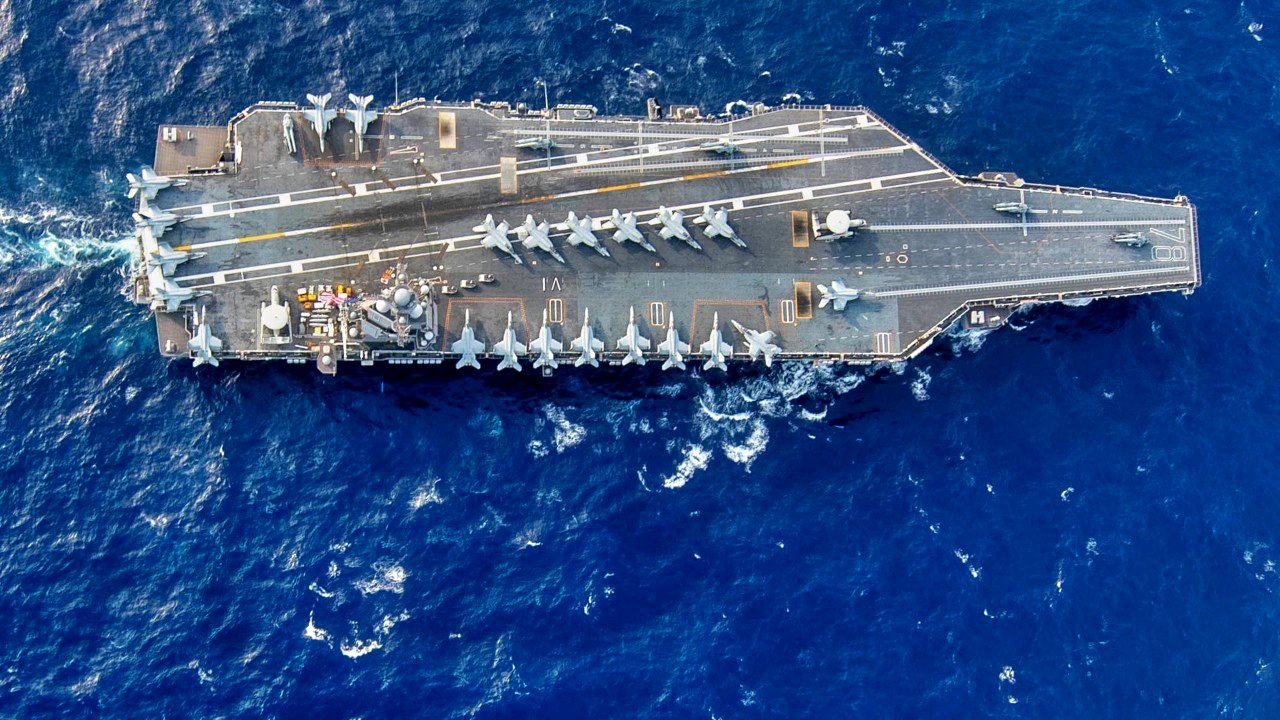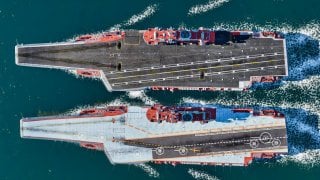Admiral Kuznetsov: Russia's Only Aircraft Carrier Is Terribly 'Unreliable'
Russia's invasion of Ukraine has exposed significant flaws in its military, including the aging and unreliable Admiral Kuznetsov, the country's only aircraft carrier. Launched in 1995, Kuznetsov relies on outdated Mazut fuel, causing operational inefficiencies and visible black smoke emissions.
The Problem: Russia's invasion of Ukraine has exposed significant flaws in its military, including the aging and unreliable Admiral Kuznetsov, the country's only aircraft carrier. Launched in 1995, Kuznetsov relies on outdated Mazut fuel, causing operational inefficiencies and visible black smoke emissions.

The History: The carrier has a troubled history, with breakdowns, fires, and ineffective performance, exemplifying broader issues within Russia's armed forces. Currently undergoing prolonged repairs since 2017, Kuznetsov's future remains uncertain, with many doubting whether it will return to active service.
Deeper Drama: The carrier's obsolescence reflects the broader weaknesses in Russia's military capabilities, particularly in the ongoing conflict in Ukraine.
Admiral Kuznetsov: Russia's Troubled Aircraft Carrier Faces an Uncertain Future
Vladimir Putin’s decision to invade Ukraine has revealed the weaknesses of the Russian military apparatus. While the Russians are capable of designing and developing modern weaponry, the bulk of the Russian fighting force is outdated and subpar. Streaming into Eastern Europe with Cold War-era tanks and jets, the Russians have failed to hold substantial ground or to establish air superiority over a relatively weak rival who is entirely dependent upon Western aid.
At sea, the Russians have hardly fared better. The flagship of the Black Sea fleet, the battleship Moskva, was sunk unceremoniously early in the conflict. And the Russian’s lone aircraft carrier, Admiral Kuznetsov, has not participated in the conflict – and likely will not.
Admiral Kuznetsov: A Lemon of an Aircraft Carrier
Launched in 1995, the Admiral Flota Sovetskogo Soyuza Kuznetsov was built with more humble ambitions than her American counterparts. Whereas American supercarriers are built with nuclear powerplants, with the intention to project power around the world, the Admrial Kuznetsov was built to burn a petro-chemical, with the intention of simply supporting Russia’s fleet of surface ships and submarines.

Whereas American supercarriers can stay at sea indefinitely, up to 25 years, the Kuznetsov has just enough endurance for 45 days – assuming she’s healthy enough to sail at all.
The Admiral Kuznetsov is obsolete and has been for decades. Why?
Because the Admiral Kuznetsov burns Mazut, a viscous, tar-like substance that burns off in deep, black clouds that are visible for miles. Sailors hate Mazut, too, because the byproduct clings to their clothes and skin, refusing to wash out, which is one of the reasons Mazut has been out of date for fifty years.
During the middle of the 20th century, Mazut was a commonly used source of naval energy. Mazut has it’s benefit, with a high volume to energy ratio that made Mazut the go-to choice for commercial and military vessels before the availability of cleaner, more efficient fuels. Today, however, shipbuilders use nuclear and gas turbine power systems.
A Long History of Problems for this Aircraft Carrier
According to Robert Beckhusen:
“Admiral Kuznetsov has a problematic history…One seaman died when the carrier caught fire during a 2009 deployment to the Med. During the same cruise, the flattop spilled hundreds of tons of fuel into the sea while refueling. Her steam turbines are so bad the ship has to be escorted by tugs in case she breaks down.” Beckhusen continued, emphasizing that the Kuznetsov was ineffective: “the carrier is barely capable of doing what carriers are supposed to do: launch fighters. When she does, she uses a bow ramp instead of steam catapults, which forces reductions in the planes’ takeoff weight and patrol time.”
Beckhusen’s description of the Kuznetsov harkens the problems Russian forces-at-large have been facing during their invasion of Ukraine. An ineffective effort, buckling beneath the weight of poor logistics and poor technology.
Although, the Kuznetsov has not participated in the Russo-Ukraine War – and likely will not.

The future of the Admiral Kuznetsov
Russia’s lone aircraft carrier hasn’t sailed since 2017, when she was deployed off the coast of Syria. Since 2017, the Kuznetsov has been undergoing a series of repairs and retrofits that were expected to add another quarter-century to the ship’s service life. Yet, the repairs have not gone as planned, are well behind schedule, and have left observers wondering if the Kuznetsov will ever sail again.
About the Author: Harrison Kass
Harrison Kass is a defense and national security writer with over 1,000 total pieces on issues involving global affairs. An attorney, pilot, guitarist, and minor pro hockey player, Harrison joined the US Air Force as a Pilot Trainee but was medically discharged. Harrison holds a BA from Lake Forest College, a JD from the University of Oregon, and an MA from New York University. Harrison listens to Dokken.
All images are Creative Commons and or Shutterstock.


